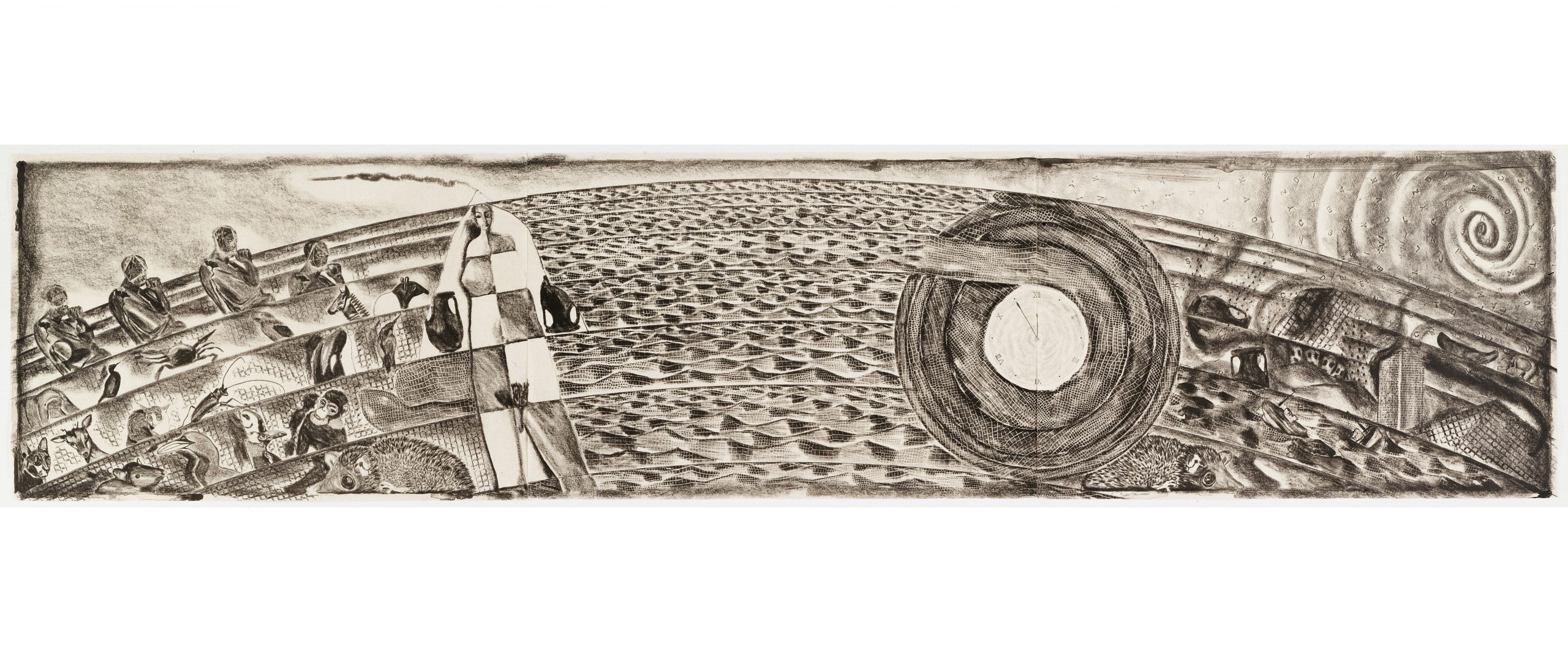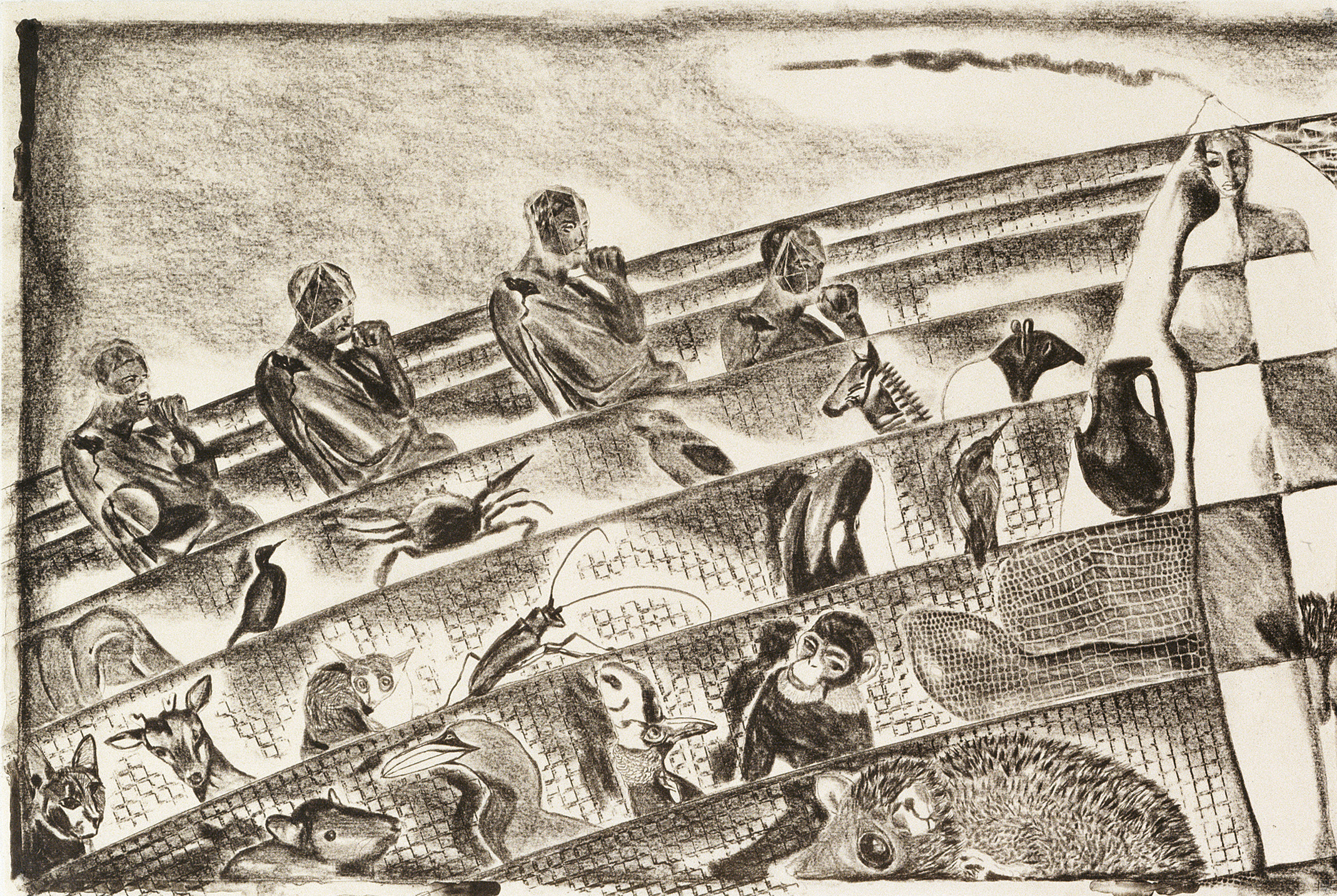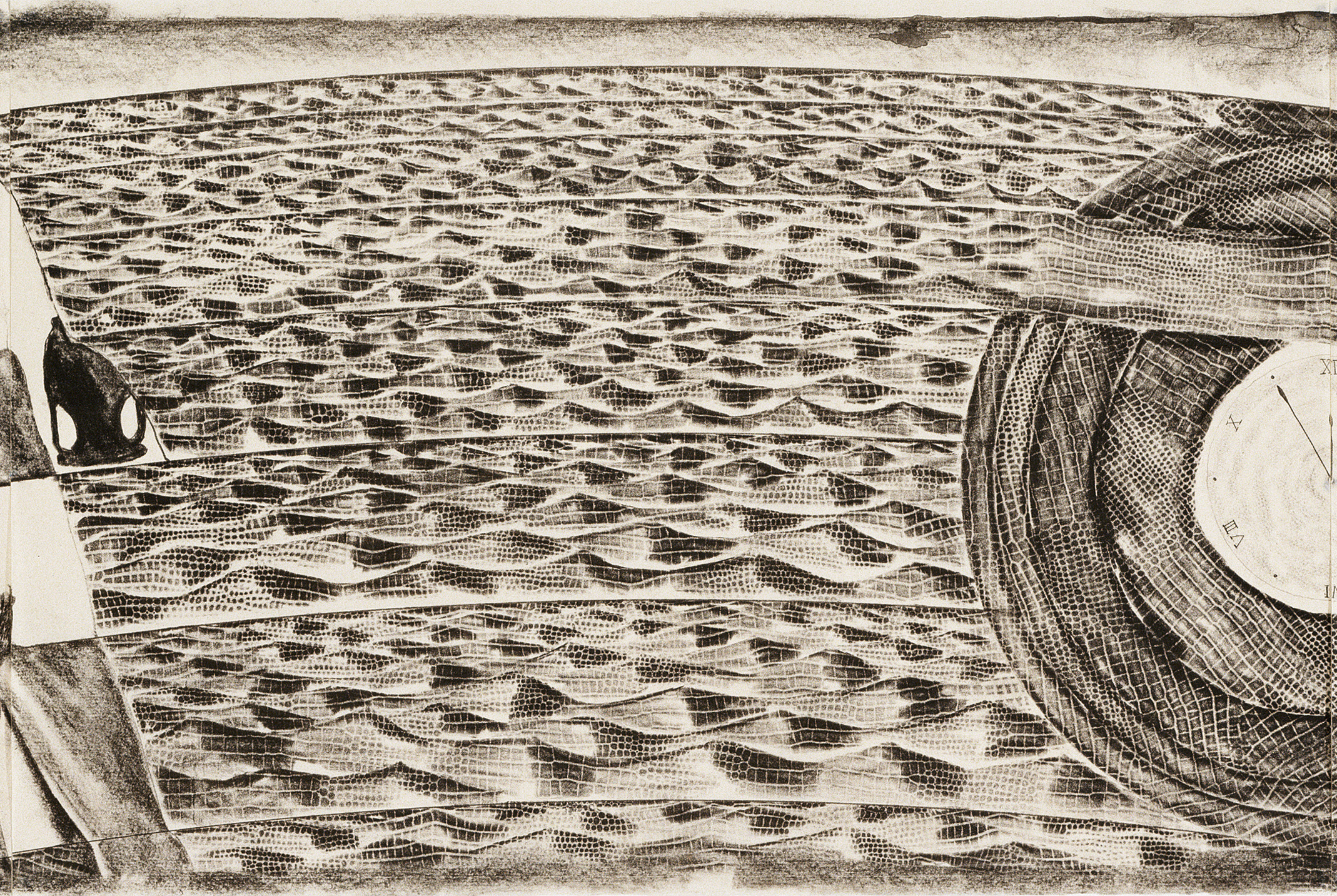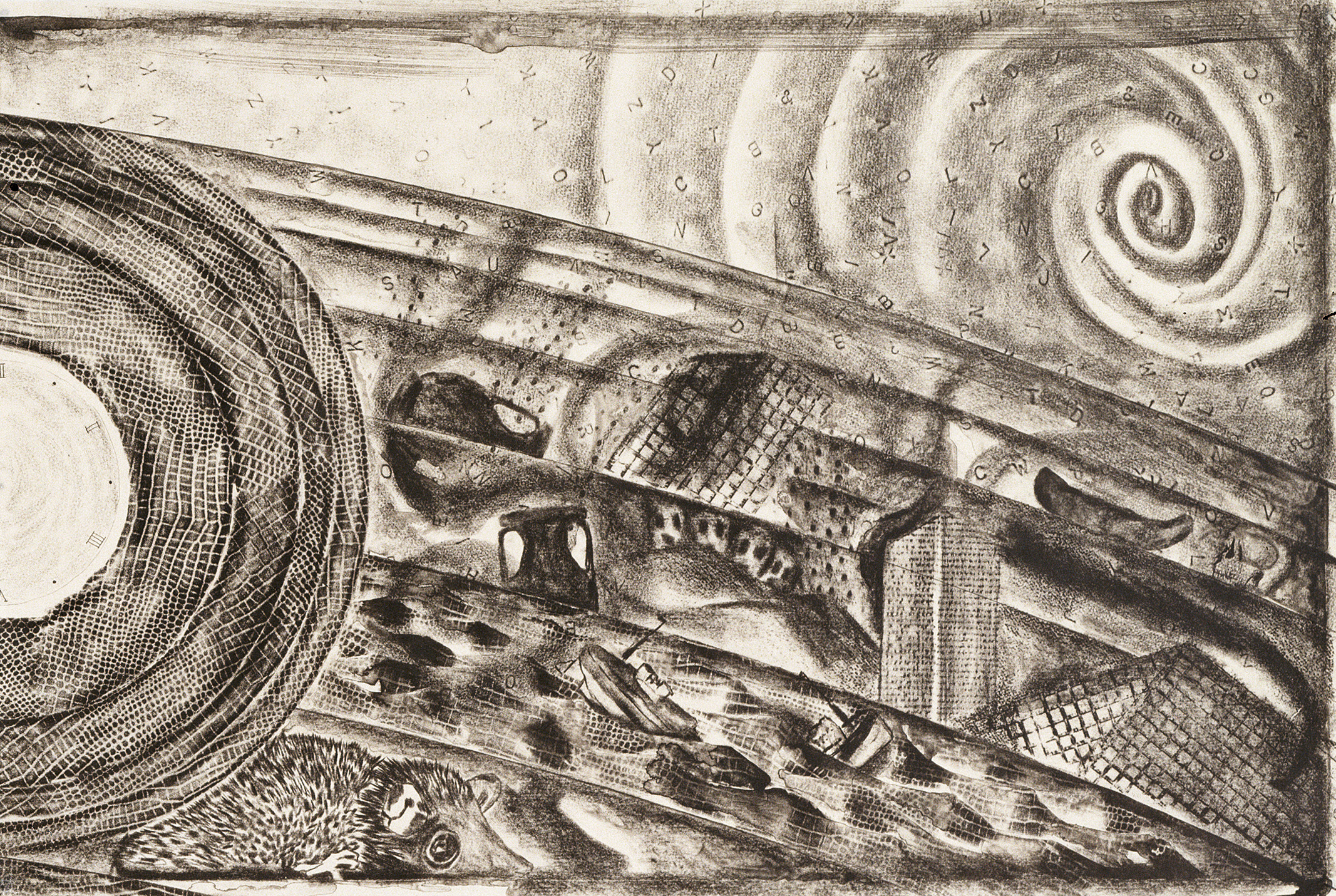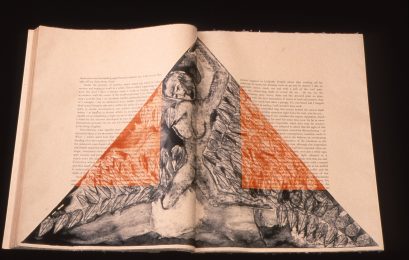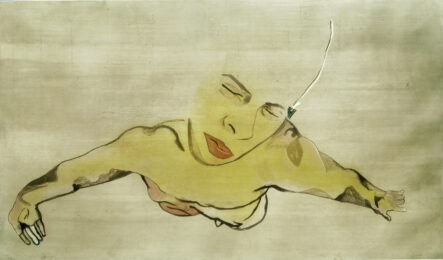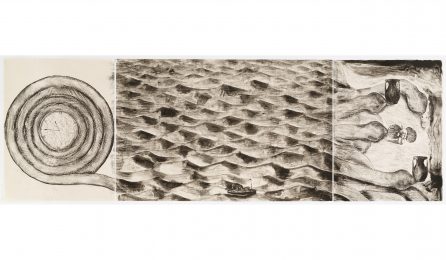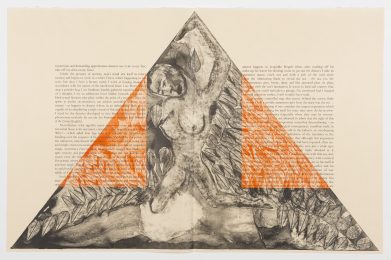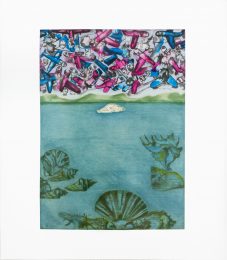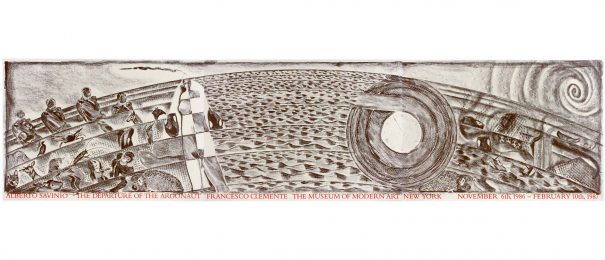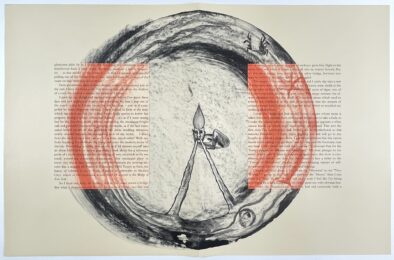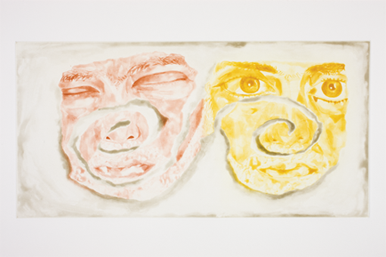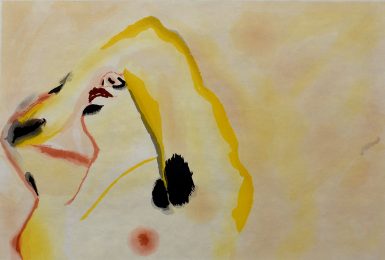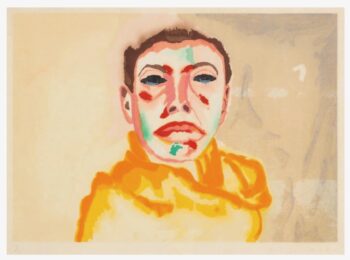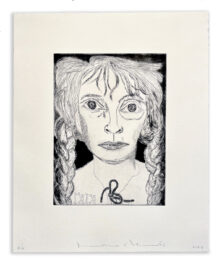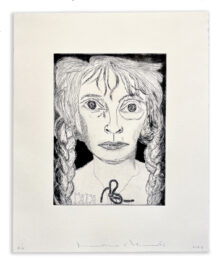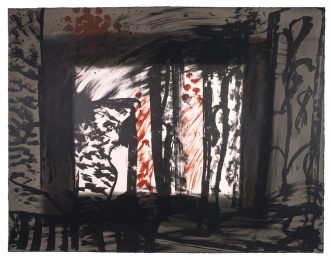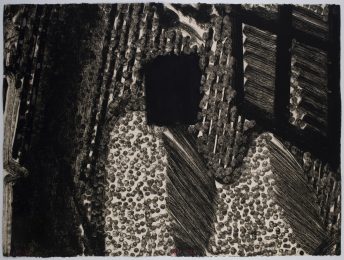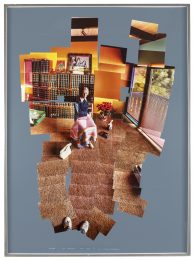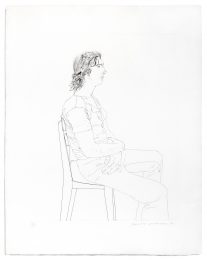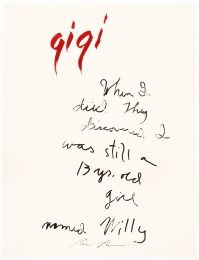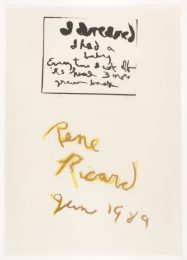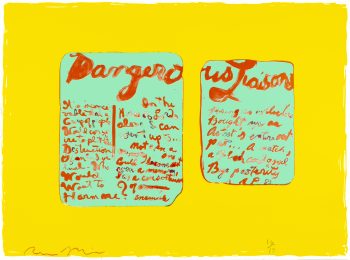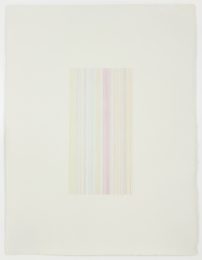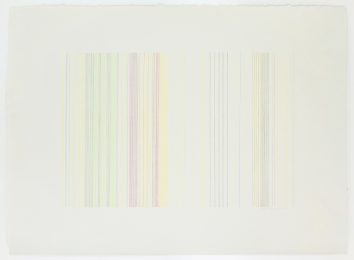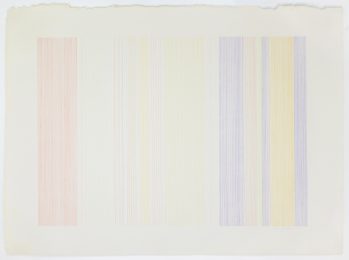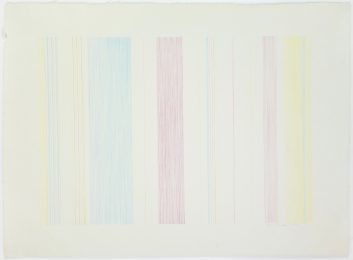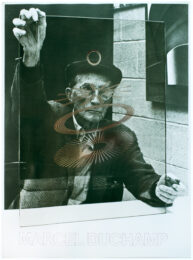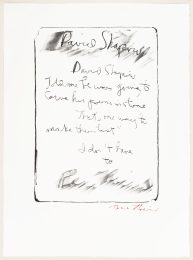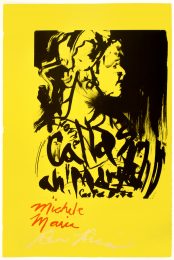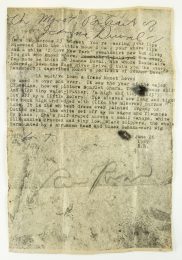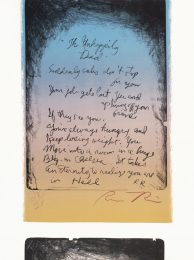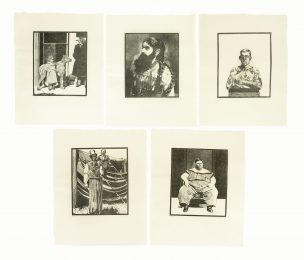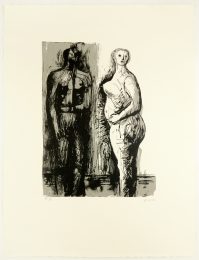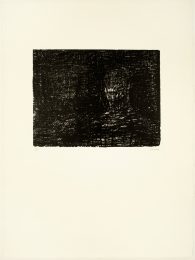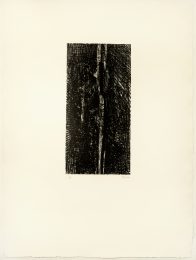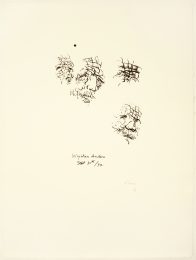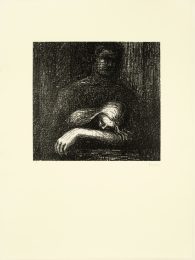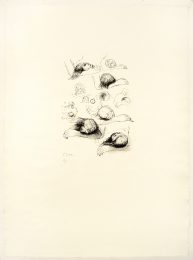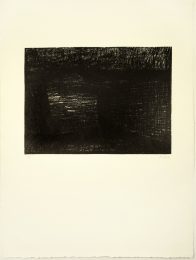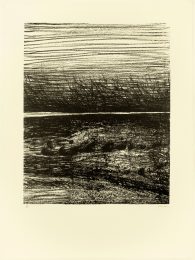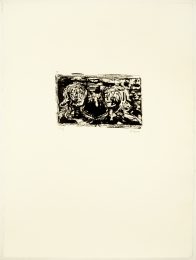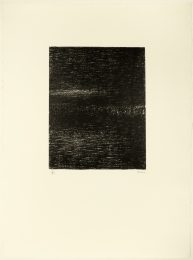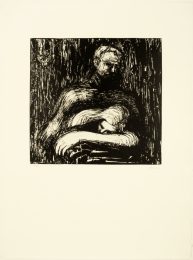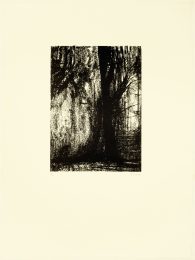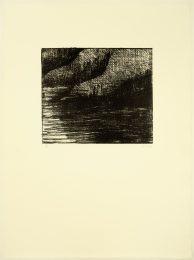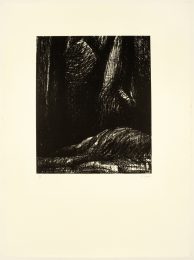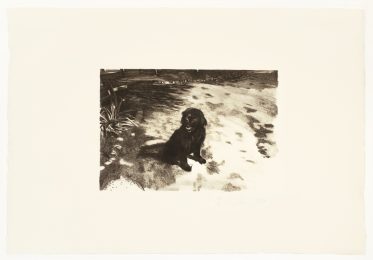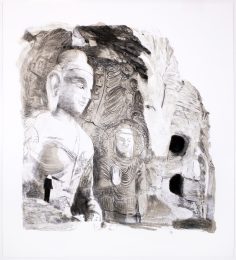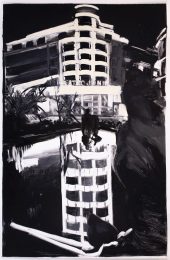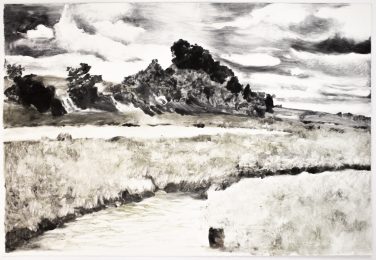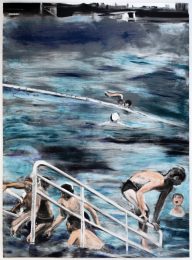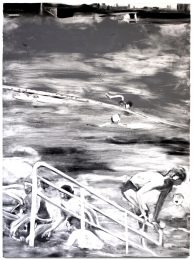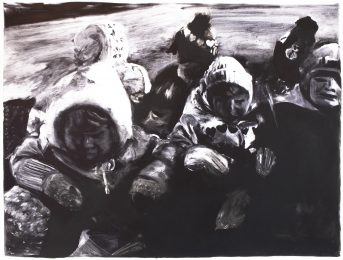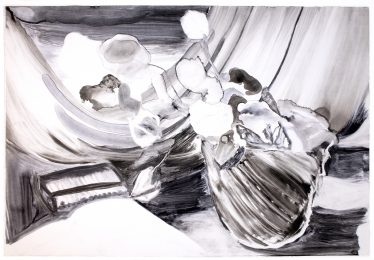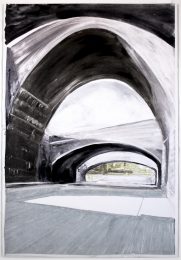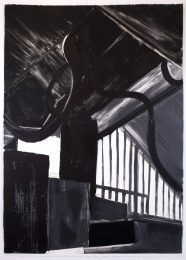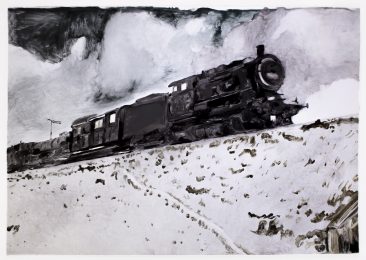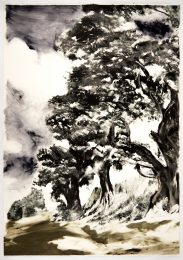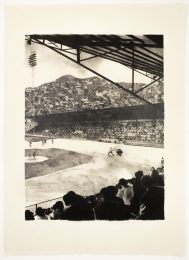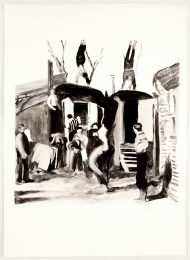Details — Click to read
Lithograph in three panels on buff mould made Okawara (Kozo) paper. Signed and numbered by the artist. Published by Petersburg Press.
Clemente drew this lithograph while working on his large scale de luxe book “The Departure of the Argonaut”, both of which were exhibited on publication at MoMA, New York in 1986. “The Departure of the Argonaut” includes 49 original lithographs overlaying the text of Alberto Savinio (the brother of Giorgio de Chirico). In both “Untitled A” and “The Departure of the Argonaut” Clemente’s surreal, mythological imagery, draws on themes of mortality, eternity, sexuality, and the fluidity of life.
This epic, three-part print portrays a snake coiled around a clock, whose body transforms into an ocean that spans the center panel. Printed with a snakeskin pattern, the waves toss a boat with three raised flags. In the rightmost panel, the water coalesces into snakes that slide down and stretch to the uppermost corner, curling around a two-handled Grecian urn. Below the urn, an armless, legless classical sculpture of a woman is flanked by two clamshells. In the lowermost corner, another urn touches the head of a snake.
Clemente’s fluid brushstrokes and airy, sketched marks capture the movement of the ocean. Its waves mark the passage of time, with a ship floating in the balance. Clemente contrasts the traditional Memento Mori imagery of a clock, marking the mortality of man, with the snake, a symbol of renewal and rebirth. To the right of the ocean, the snakes’ phallic heads nudge two-handled vessels.
John Keats’ poem “Ode to a Grecian Urn” describes the urn’s beauty as eternal, yet lacking the vitality and warmth of life itself, and ultimately serving as a reminder of the brevity of human life. The urns can be seen, too, as the ephemeral vessel of the human body. Between the vessels, the armless, legless form of a woman calls to mind Botticelli’s Birth of Venus, in which the Roman goddess of love and fertility emerges nude from a clamshell. The length of Untitled A suggests a journey, whether an individual journey of self-understanding, or the larger struggle of man for meaning.
A companion piece, Untitled B, employs similar imagery, capsizing grecian urns and ships in the ocean, with a menagerie of animals and human figures spread across the sheets in broad arcs. Here, the clock has almost struck midnight, while in this work’s companion piece, Untitled B, the clock reads 10:45.
A prodigious producer of paintings, drawing, and prints, Clemente frequently depicts the nude human form, including intimate self-portraits and couples in erotic embrace. Clemente’s visual language combines art-historical reference and ancient mythology with images of nature, imbuing figurative scenes with a dreamy spirituality. Sex, violence, death and birth provide equal inspiration for Clemente’s nomadic soul-searching.
This lithograph is in the collections of Des Moines Art Centre, Des Moines and the National Gallery of Australia, Canberra amongst others.

